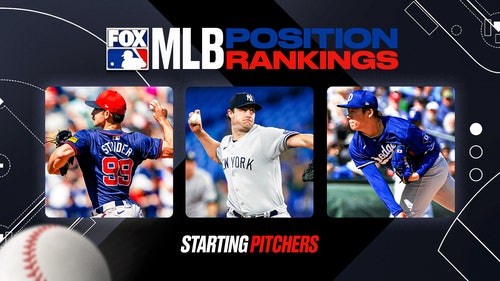
'Bout time for national pastime to get offensive
As Barry Bonds sits at a defendant's table in San Francisco - his reputation already in tatters, his sole purpose now just staying out of jail - we can't help but be reminded of a downright offensive time in baseball's history.
Sure was fun, wasn't it?
No, we're not glorifying sluggers with ever-growing heads and enough acne to watch ''Hannah Montana'' turning the national pastime into something akin to a video game. Pumped-up players whacking balls over the fence with such numbing regularity and fearsome power that those stats should be accompanied by an asterisk, or at least a ''Wii.''
But chicks still dig the long ball - and so do the guys.
The grand ol' game has been putting up way too many scores that resemble a World Cup or the NHL. 1-0. 2-1. 3-2. And unlike soccer and hockey, which at least provide a lot of running and skating in between all that lack of scoring, baseball isn't exactly brimming with excitement when a contest turns into nothing but a series of flailing swings, weak grounders and soft pop-ups.
Yep, as opening day approaches, there's clearly a need to juice up baseball - only this time, let's do it legally.
''The Year of the Pitcher will continue,'' Oakland A's manager Bob Geren said during spring training. ''The pitching seems to keep getting better, not worse.''
Indeed, the arms race has reached epic proportions, producing an arsenal of elastic arms capable of throwing all sorts of nasty pitches (Mr. Slider, meet the Spike Curve). It seems every team has one or two dominating starters - heck, the Phillies have four of 'em.
Those guys are usually followed in quick succession by specialized relievers who might throw to only one or two hitters, never burdened by the idea of actually having to pace themselves.
A year ago, the average of 1.9 homers per game was the lowest since 1993. Runs, hits, batting average and ERA dropped to their lowest levels since '92. Considering many of the top hurlers have yet to reach their prime, this trend seems unlikely to change anytime soon.
''The game's kind of gone back to the way it was in the '80s - pitching and defense,'' Arizona general manager Kevin Towers said. ''Teams now are focusing more on their bullpen and the importance of a bullpen in having a successful franchise. To me, you can't win without (pitching). It's paramount.''
Nothing wrong with that.
But let's not let pitching become such an overwhelming factor in the delicate balance between scoring runs and keeping the other team from doing the same that it becomes a drag at the turnstiles. We're not suggesting there's any danger of returning to the dead-ball era, but the game is trending a bit too uncomfortably toward the 1960s.
That was a decade when Hall of Famers such as Sandy Koufax and Bob Gibson put up the sort of ludicrous pitching numbers that were, in essence, the equivalent of what we saw from an offensive standpoint three decades later when so many hitters were 'roided up.
In the last four years of his much-too-brief career, Koufax never had an ERA higher than 2.04. In 1968, Gibson pitched 304 2-3 innings and allowed a grand total of 38 earned runs, a microscopic 1.12 ERA. That same year, Carl Yastrzemski won the AL batting title with a puny .301 average, while the entire league hit a cumulative .231.
Ugh.
After that, baseball decided to level the offensive playing field.
Before the '69 season, baseball tightened up the strike zone and lowered the pitching mound from 15 to 10 inches. Might be time for a similar step. Lower the mound to 8 inches and see what happens.
Let's not stop there:
- Shrink pitching staffs. Ten used to be the traditional size of a pitching staff, and some teams carried as few as nine. Now, virtually every team has a dozen pitchers on its 25-man roster. Starters need last no more than six innings before they turn things over to the bullpen. With some teams, the game is essentially over at that point if they have a lead. Even if they're not tired, the starter hands off to three guys with closer-like stuff, each of whom is required to get three measly outs. So let's limit teams to no more than 11 pitchers on a roster, removing a bit of a manager's flexibility.
- Have a two-batter minimum. These bloated staffs also include specialists who often face no more than one hitter. Perhaps it's a lefty who's tough on left-handed hitters. Or a sinkerballer who's called in with runners aboard because he's good at keeping the ball on the ground, thus making it more likely he'll set up a double play. Smaller staffs will make it harder to carry those sort of pitchers, but let's go an additional step to guard against such gerrymandering: Require relievers to face at least two hitters when they come into the game.
- Develop a livelier ball. There's always been speculation the balls were jacked up during the homer-happy '90s, put into play to help the game regain its popularity after a devastating strike wiped out the 1994 World Series. We have no idea if that's true, but they've clearly developed golf balls that travel farther than they used to. Maybe they can do the same with a baseball.
Those simple steps would juice up the game - without aluminum bats or having to fret about an embarrassing trial somewhere down the road.
Now, let's play ball!
---
Paul Newberry is a national sports writer for The Associated Press. Write to him at pnewberry(at)ap.org










